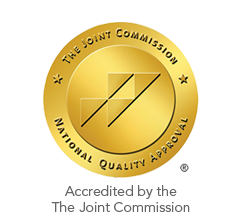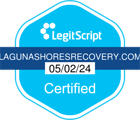Hydrocodone Addiction Treatment in California
What is Hydrocodone?
Hydrocodone relieves pain, but it also causes a rush of the neurotransmitter dopamine to the brain. This effect can give off a euphoric high that many people find addictive.2 As a result, a person may increase the amount they take as a means to achieve the same high they once did.
While this drug has medical uses, it is subject to abuse. In 2017, an estimated 1.7 million people in the United States suffered from a substance abuse disorder related to prescription pain medications, according to CNN. Many of those addicted to opioid drugs need addiction treatment at a drug rehab facility.
A Brief History
The Creation of Hydrocodone
Narcotic Misunderstanding
Currently, it is the second-most opioid pharmaceutical submitted to drug evidence at local, state, and federal laboratories. Americans also use an estimated 99 percent of the world’s hydrocodone supply, according to The Washington Post.3
Be Brave. Get Help.
Other Names
357s
Dro
Hydros
Tabs
Vikes
Bananas
Fluff
Norco
Vics
Watsons
Misconceptions
Abuse, Health Risks, and Withdrawal
People may take hydrocodone in a pill form. They may also crush the pills and snort them or mix them in liquids and inject them.
People can and do overdose from hydrocodone in the United States. These overdoses can prove deadly.
Many formulations also have acetaminophen in them. This helps the the drug work more effectively. However, if a person takes more than prescribed and use it illegally, they’re at risk for liver damage.
A person can experience withdrawal symptoms if they take hydrocodone on a regular basis or if they abuse it illegally. While withdrawals are not deadly, they can cause symptoms that include:
- Nausea
- Restless legs
- Shaking
- Strong cravings for the drug
- Sweating
- Vomiting
Because the withdrawal period can be so strong, some people may choose to utilize professional rehabilitation treatment. Medically supervised detoxification programs can help a person stop taking hydrocodone while receiving medications that may help a person reduce their withdrawal symptoms.
The U.S. Food & Drug Administration has approved medications to treat hydrocodone addiction. Examples of these medications include methadone and Suboxone. These medications don’t give off the same euphoric high and can help to ease the withdrawal symptoms.
Treating the Addiction
Taking medications to reduce withdrawals or slowly tapering a person’s dose can help. Initial opioid withdrawal may take anywhere from hours to days, depending on a person’s health, how much a person was taking before, and how long they’ve been abusing the pills.4
A person struggling with addiction can often benefit from counseling or talk therapy. This therapy can help a person identify how to build a new life free from substance abuse. Topics may include identifying a person’s motivations for stopping substance use or helping a person identify triggers that can keep them abusing a particular substance.
A person can take medications like methadone and suboxone to reduce their risks for overdose and minimize drug cravings. A person must often enter a drug monitoring program to participate in these programs.
A person will often participate in a relapse prevention program, such as Narcotics Anonymous or SMART Recovery that helps a person continue in their recovery and overcome obstacles they may experience even years after they got sober.
Reach out to verify your insurance coverage for addiction treatment
https://www.deadiversion.usdoj.gov/drug_chem_info/hydrocodone.pdf
https://www.cnn.com/2017/09/18/health/opioid-crisis-fast-facts/index.html
https://www.washingtonpost.com/news/wonk/wp/2017/03/15/americans-use-far-more-opioids-than-anyone-else-in-the-world/
https://www.webmd.com/mental-health/addiction/breaking-an-addiction-to-painkillers-treatment-overvew#1

 Matthew Beck B.A, M.A, LMFT
Matthew Beck B.A, M.A, LMFT 


